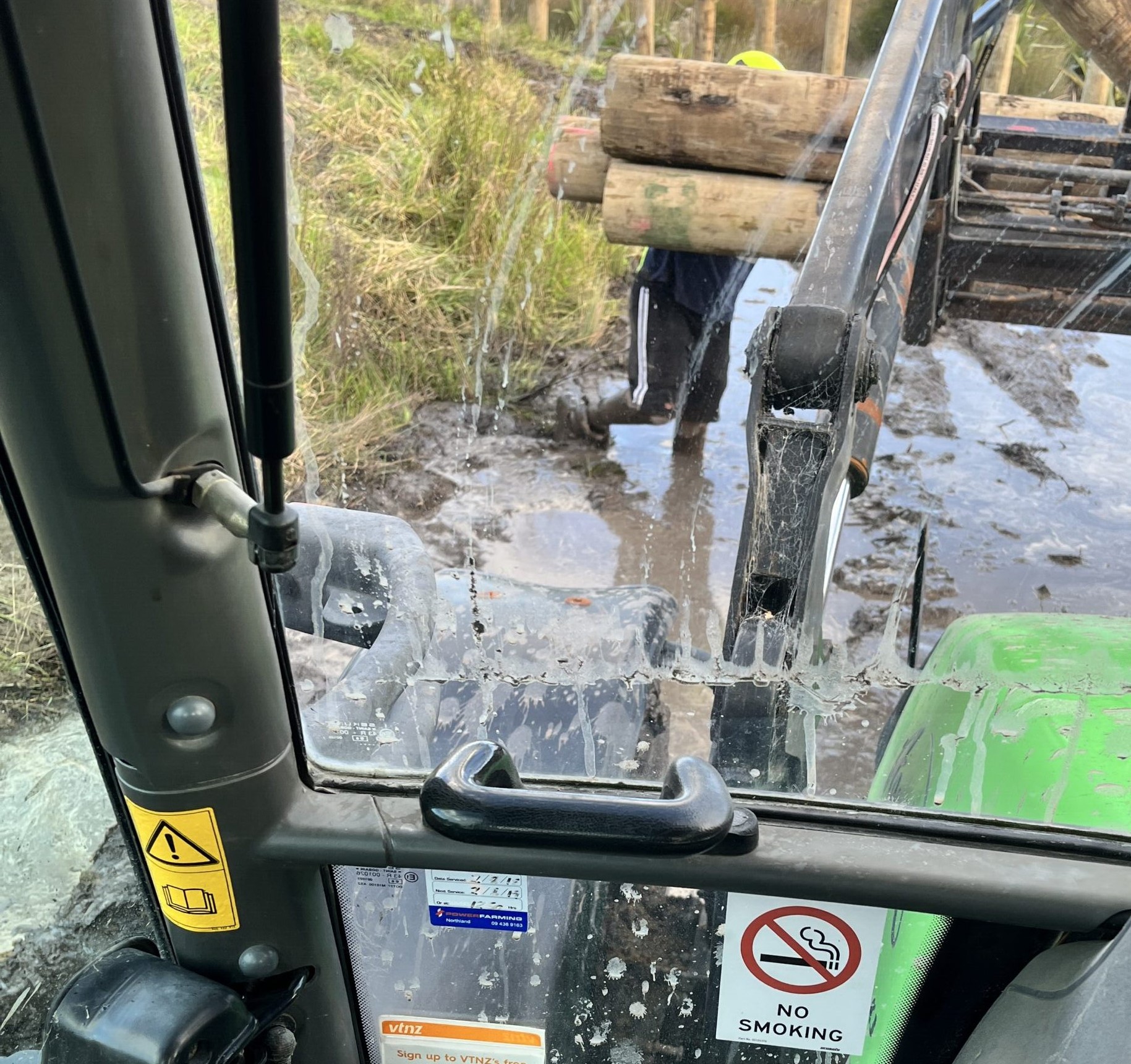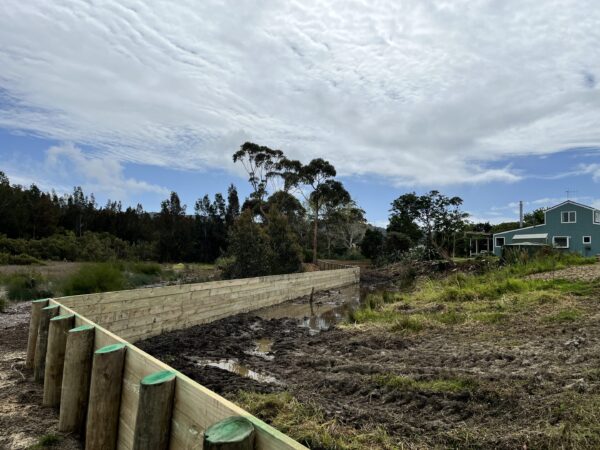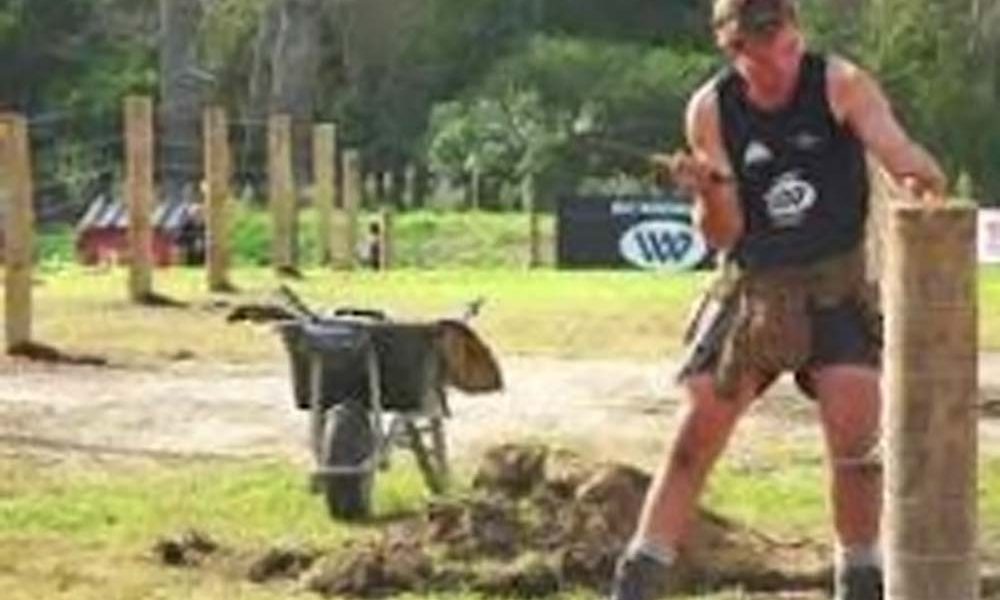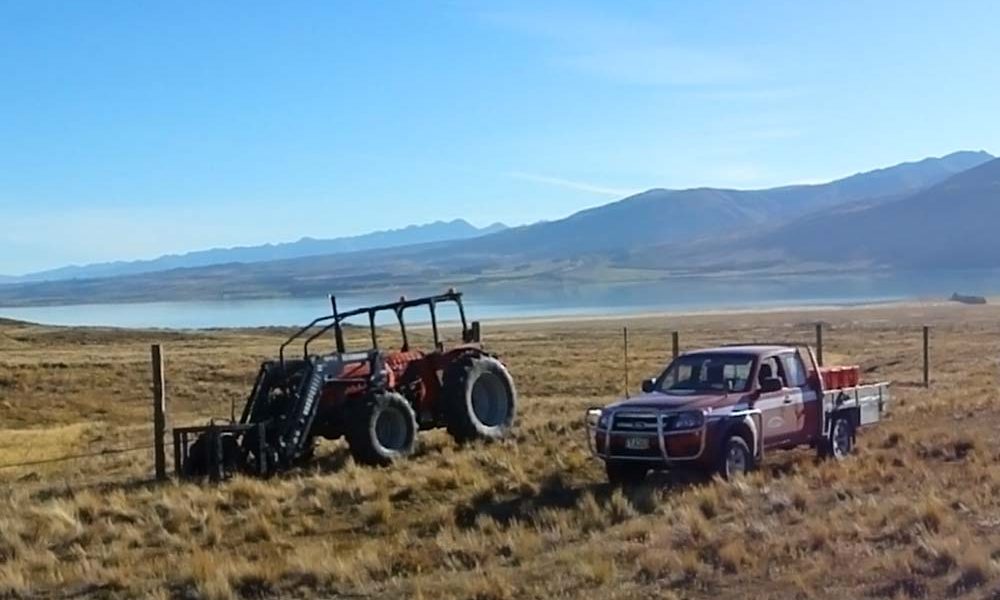
Having gained a lifetime of tractor experience in various locations around the country as a sharemilker and now fencing waterways, swamps and wet areas, Shane Beets from A1Fenceworx could be called a bit of an expert when it comes to fencing in wet areas. He says the most important thing is to be prepared.
Know your soils
“Know your soil type, recognise what the weather has been doing and how it might impact your ability to put machinery across wet ground and what the weather is likely to do while you are on the job,” is Shane’s advice. “Consider what materials will be suitable, especially for boundary fencing. When you are quoting the job, build in an extra margin for ‘what ifs’.”
Shane thinks heavier soils like clay can be easier to get stuck in, but if you put down longer posts they are more likely to stay there. He says heavy soil doesn’t move much, and you get a suction effect.
“Lighter soils like peat and light volcanic are easier to fence but give it a few years and the fence may start to lean over. Longer droughts are making it worse by further drying out light soils making them crumbly and unstable. Soils on a pan are hard to get a post in, but they don’t move once through the pan” says Shane.
Shane thinks swamp fencing is probably the most difficult to do. Longer, heavier strainers and bigger blocked stays are essential, footings are harder to do.
“We find it more cost-effective, with a better result to put down longer posts. We always have spare 2.4 or 2.7 posts on hand. Longer posts are also a better option on moving ground.”
Shane says managing the tractor driver is critical. The guy on the post driver can see what is happening with the tractor tyres better than the driver. They approach each post from an angle and drive in and out on each set of tracks once. He says keeping up on rushes and other vegetation helps reduce sinking. They have been known to cut branches off a handy Willow tree and lay them where the tractor will drive. “It’s always easier to prepare and lay the branches before you get stuck. And if you do get stuck, stop early” says Shane.
Experience pays off for Shane
Having once been one, Shane says a farmer is going to be happier to pull a fencer out that has not made a big mess and bellied his tractor. He says that he has experienced the embarrassment of making an ‘I’m stuck again’ call 15 minutes after being pulled out.
He says they slowly “feel” their way into a swamp and fence downhill. The tractor is less likely to get stuck going backwards down a swamp. If you have a compressor handy, let some air out of the tyres.
“We do a lot of road driving with the tractors so don’t have cleats or duals. That’s never stopped us though. The whole team just have a chat about it and make a plan, then get the job done.”
Shane also suggests that when fencing along or across waterways, fencing contractors put some thought into how the fence will perform if it floods.
“Ask the landowner how high the water comes up and suggest an additional margin for serious flooding.”
Shane remembers fencing all the waterways on a local dairy farm. “The farmer was an old chap that would not spare a blade of grass and he was so angry that Fonterra was making him fence them all. I advised him that the fence should be installed further back. The farmer said “no way.” 6 months later, after 2 big floods, kilometers of fencing were gone.”
Shane says when the team fence across a stream, they set up break away points so that if a flood were to take out a fence, it will take out a small section only, making it quick and cheap to fix. They install a decent strainer each side of the waterway, but out of the main flow zone and tie weaker ties that will give in a flood, as well as staple the wires on the downstream side to further assist with the fence breaking away, but hopefully leaving the posts in place.
People have lots of small dams in Northland, and it is not an unusual request to build a jetty on a dam. The team usually do 3-4 each year and with A1fenceworx life styler client base, these types of requests are becoming more common. Shane picks his time and does them in the driest part of summer, getting out as far as possible for the client.
A recent job that A1fenceworx did, was interesting, says Shane, but not one that he would want to do every day.
“The client requested a 100-meter retaining wall, on the boundary, in the estuary, on peat soil with tree stumps underneath. A fair challenge, so I accepted the job and did our planning with the guys. We had a second tractor on site just in case.”
When they started it was nice and dry, and the client had laid tree mulch from gum trees he had cut down, but unfortunately, it started raining the second day in and it didn’t stop. “The job turned into a bog, the mulch pushed under the mud, and it was very unpleasant going. We got the tractor stuck – it wedged on a buried tree stump – but with a bit of planning and the second tractor, it popped right out” says Shane.
Because it was peat, Shane said he decided to use 3.6m long building poles with a SED (small end diameter) of 225mm. And they were heavy. The team had to slide them off the tractor forks onto place and lift them with two and sometimes three of the guys. The rails were 200x50mm and also a challenge to fit in the mud.
“Even though our best laid plans were put to the test, if we hadn’t planned for the worst, the job would have been a disaster. As it turned out, the wall is very strong and looks great and the client is super happy” Shane says.
“Northland is notorious for having wet and difficult ground to fence, especially in the winter and even though the team are used to it we still plan and approach wet areas with caution” says Shane. “We hadn’t had a tractor stuck for about 3 years until the retaining wall job. A bit of common sense always pays off and we never just charge on in.”
Article written by Shane Beets and Heather Kawan
![]() www.a1fenceworx.co.nz
www.a1fenceworx.co.nz
Published in the Difficult & Demanding Fencelines Feature in WIRED Issue 67 / December 2022 by Fencing Contractors NZ
Read WIRED online
Follow us on Facebook
© Fencing Contractors Association NZ (FCANZ)












